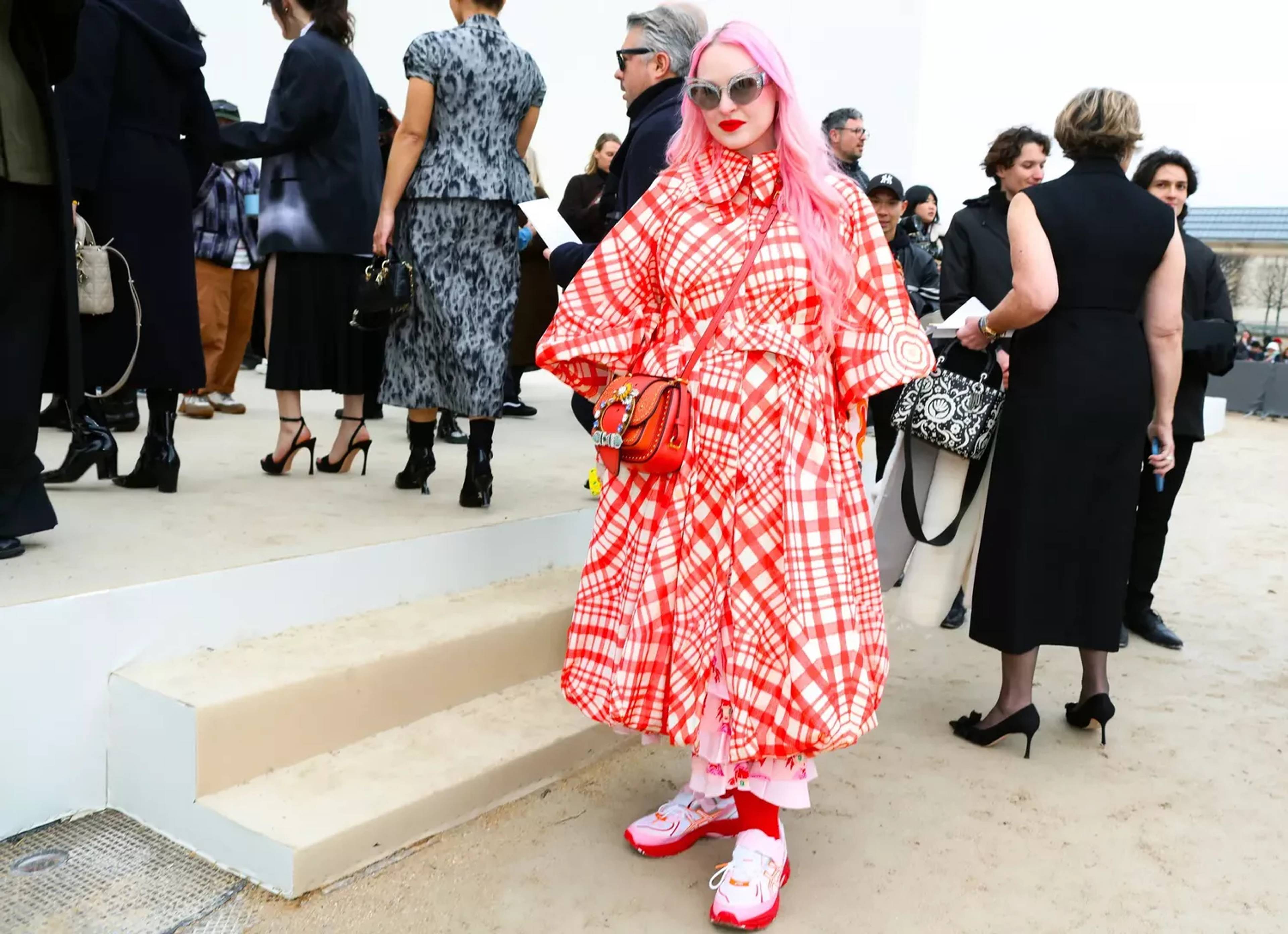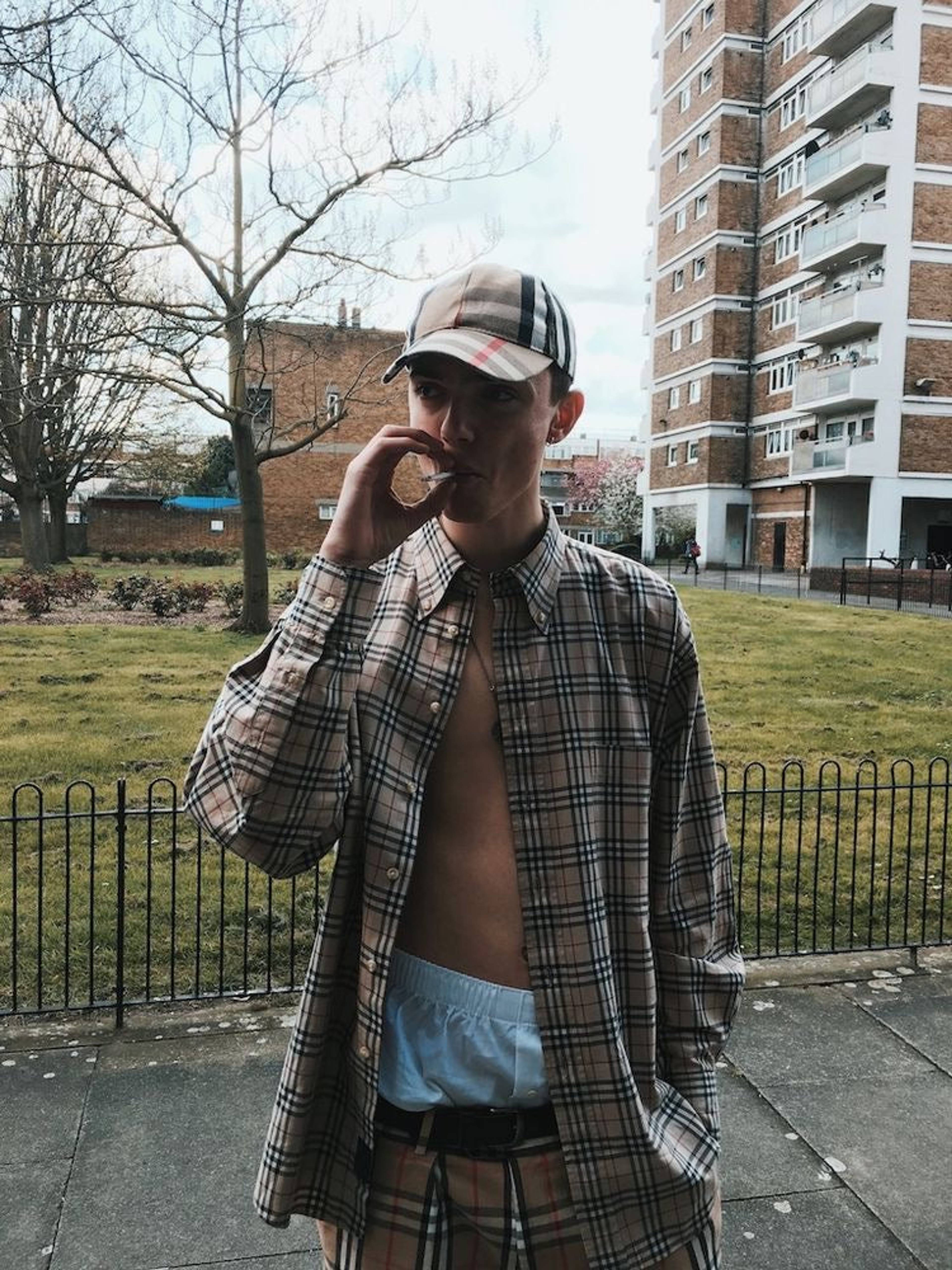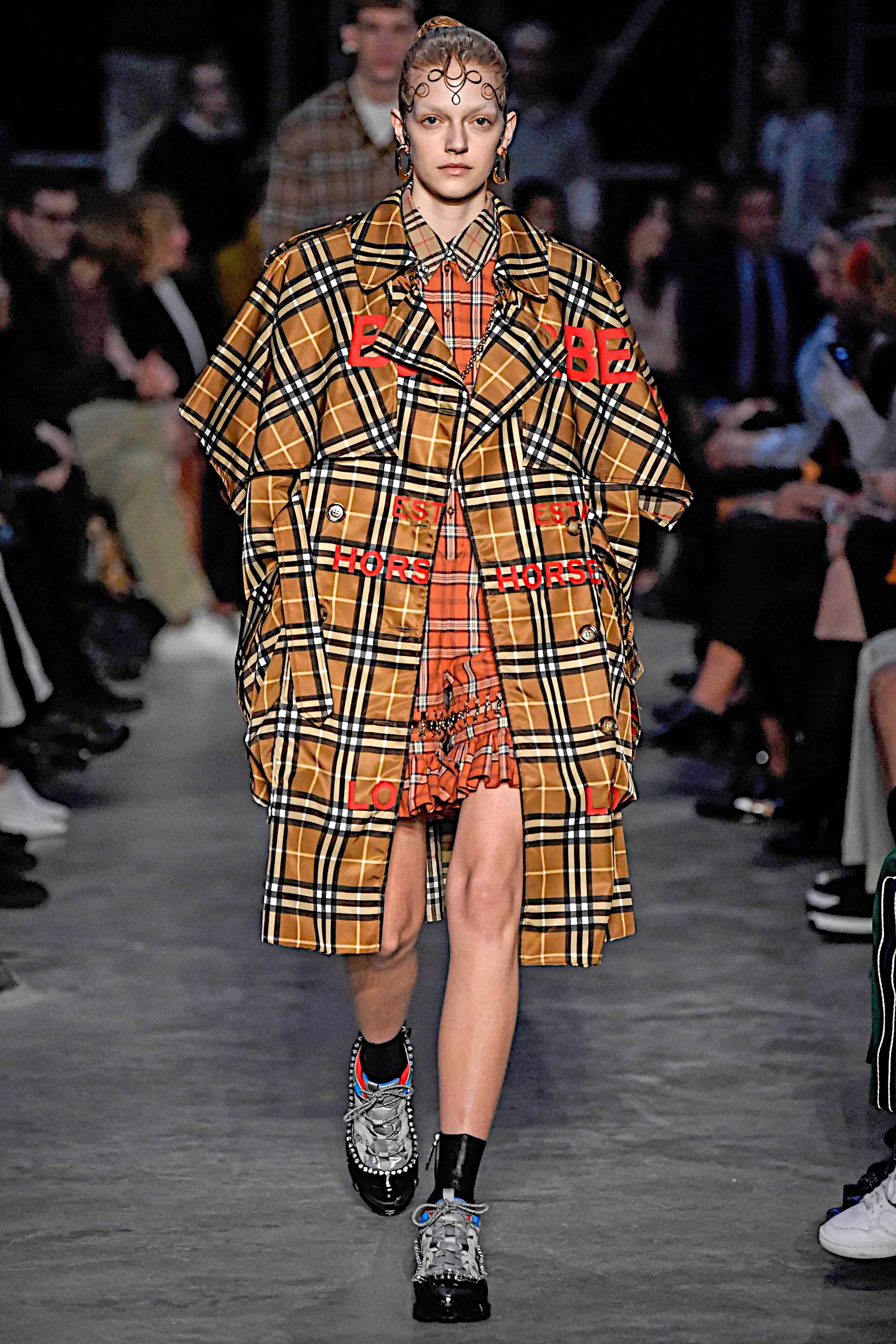Another cycle of fashion weeks draws to a close – a “circus,” as APC’s founder Jean Touitou calls it, advocating for a single Week per year. Ironically, what was designed as fashion’s showcase is only available to industry and elite invitees.
The internet has already democratized fashion weeks – to an extent – bringing us TikTok and Instagram reels of “exclusive” dinners, photos from backstage, and from the shows. Some might say exclusivity is the point: that fashion is only desirable to fans who – inverting Groucho Marx’s “I don’t want to belong to any club that would have someone like me as a member” – wouldn’t want membership of anything else.
Every exclusion produces an excess. Just as in psychoanalyst Jacques Lacan’s theory of jouissance – a too-intense pleasure defined by overflow – fashion stans are fashion week’s literal excess. Excluded from the official event, the super fans who hang out outside every show – hoping to see their idols, or to be spotted by street-style photographers – occupy what Lacan called the border zone of plus-de-jouir which simultaneously means “no more fun” but also “more fun.” And their excess is visible. The fans often dress more extravagantly than the models inside the shows, prompting designers to try to win back the limelight, producing a circuit of excess that explains the common complaint that fashion shows are filled with “unwearable” garments. (They’re more often filled with highly sellable garments styled with some kind of weird hat/feather boa/sunglasses that ensures the look features on the front page or Instagram).
Being where you shouldn’t be is a badge of honor. Wearing what you shouldn’t is too, a transgressive excess that’s often called “vulgar.”
As with jouissance, fans’ excess is not a sideshow to Fashion Week, but is at the heart of its cycle of recuperation. When a stan’s excessive dressing gets noticed, they may reach influencer status – and turn up to the next shows wearing clothes lent by the designers inside. The most successful are invited to the shows themselves. This is nothing new: the first fashion week took place in 19th-century Paris where, much like now, designers paid contemporary influencers to appear in public (notably at racetracks) wearing their creations.
Playing out at the literal margins of fashion weeks, the entrances to the show tents in the Tuileries or Central Park, or wherever, are where both official and “unofficial” attendees are papped, and where appearance is less about making an entrance than “making an exit.” These margins are what folklorist, Arnold van Gennep, defined in 1909 as “liminal”: transitional cultural zones that facilitate a change of state. Liminal literally means “threshold.”
In 2015, the US fashion website, Refinery 29 insisted that “Every single person who works in the industry has snuck into a show.” Being where you shouldn’t be is a badge of honor. Wearing what you shouldn’t is too, a transgressive excess that’s often called “vulgar.” Vulgarity is a liminal state because it crosses a line: it’s obvious that it shouldn’t be there. Or its wearer shouldn’t.
British chav wearing nova check garments
Burberry FW19
Fashion is essentially vulgar in both senses of the word – as in showy, excessive, but it also means “of the people.” Your average punter may not have heard of the most sophisticated and experimental film directors, visual artists or writers, but they recognize the names COMME des GARÇONS and Martin Margiela. People with no links within the fashion industry, and with everyday incomes, still save up for designer items. Or buy them second-hand. Or buy the lipstick, the perfume. Or buy a dupe. And, symbiotically, fashion designers borrow from these reinterpretations.
Fashion is vulgar because it reifies helplessly, fixing a vibe in a dress, a shirt, making that vibe buyable, transferrable, destined – eventually – for the recycling bin, for landfill, destined to become unfashionable. Until it’s recuperated. The more “unfashionable” the item, the more vulgar is its enshrinement as “special,” in excess of the original (see Balenciaga’s crocs). Price inflation has something to do with this – what is more vulgarly transferrable than money?
A prime example of this cycle is Y2K UK chav style, which was not a desecration of fashion but its essence. Burberry decreased its use of its signature nova check from 20% to 5% of garments due to its adoption by an aspirational working-class fanbase in the early 2000s. In the same year, chav was the Oxford English Dictionary’s “word of the year.” Owen Jones’s 2011 book, Chavs: the Demonisation of the Working Class, featured a baseball cap in what looked very like nova check on its cover. At £50 in 2004, the cap granted access to exclusivity, where a Burberry trench, or even a shirt would have come at too high a price.
It’s easy to imagine Gucci, Versace as stadium bands, but that’s not for every label. What would fashion weeks be if they were all excess and no exclusivity?
But in 2019, nova check was back on the catwalk and by 2022 it had gone full cycle and become streetwear again. FKA twigs was twerking in a nova check bikini, straddling a motorbike with a Burberry logo on the video of her song papi bones; posh kids were wearing the brand not because of its aristo, but its urban associations (privately-educated twigs, whose video also shows her pushing a baby carriage round a council housing estate is on ambiguous territory here). The check has been détourned and recuperated so many times that it’s impossible to keep up.
In 2018, the Guardian revealed that Burberry had burnt unsold merchandise worth over £28.6m in the previous year to maintain the brand’s exclusivity rather than let it be sold cut-price. In April 2019, the UK-founded global environmental movement Extinction Rebellion détourned the liminal space outside the shows, staging a die-in outside London Fashion Week venues to protest the industry’s environmental excesses. Fashion is a target for these actions in the way other equally wasteful businesses are not (why no die-ins outside car shows?) because its exclusivity relies on blatant excess.
Access is the opposite of excess. What would happen if fashion weeks became not only more environmentally responsible but less exclusive? Should they open up? And how? Could there be a ticket lottery, as for the Wimbledon tennis championships? Should shows go large? It’s easy to imagine Gucci, Versace as stadium bands, but that’s not for every label. What would fashion weeks be if they were all excess and no exclusivity?
In March’s Paris Fashion Week, Chanel’s Fall/Winter 2025 runway show was invaded by an outsider who’d sneaked past security, perhaps blending in by camouflaging in front-row, stealth wealth grey. In a place where successful transgression is always applauded, the front row oohed and ahhed and, swapping places with the paparazzi waiting for them outside, turned their phones from the runway to photobomb … the pigeon.




